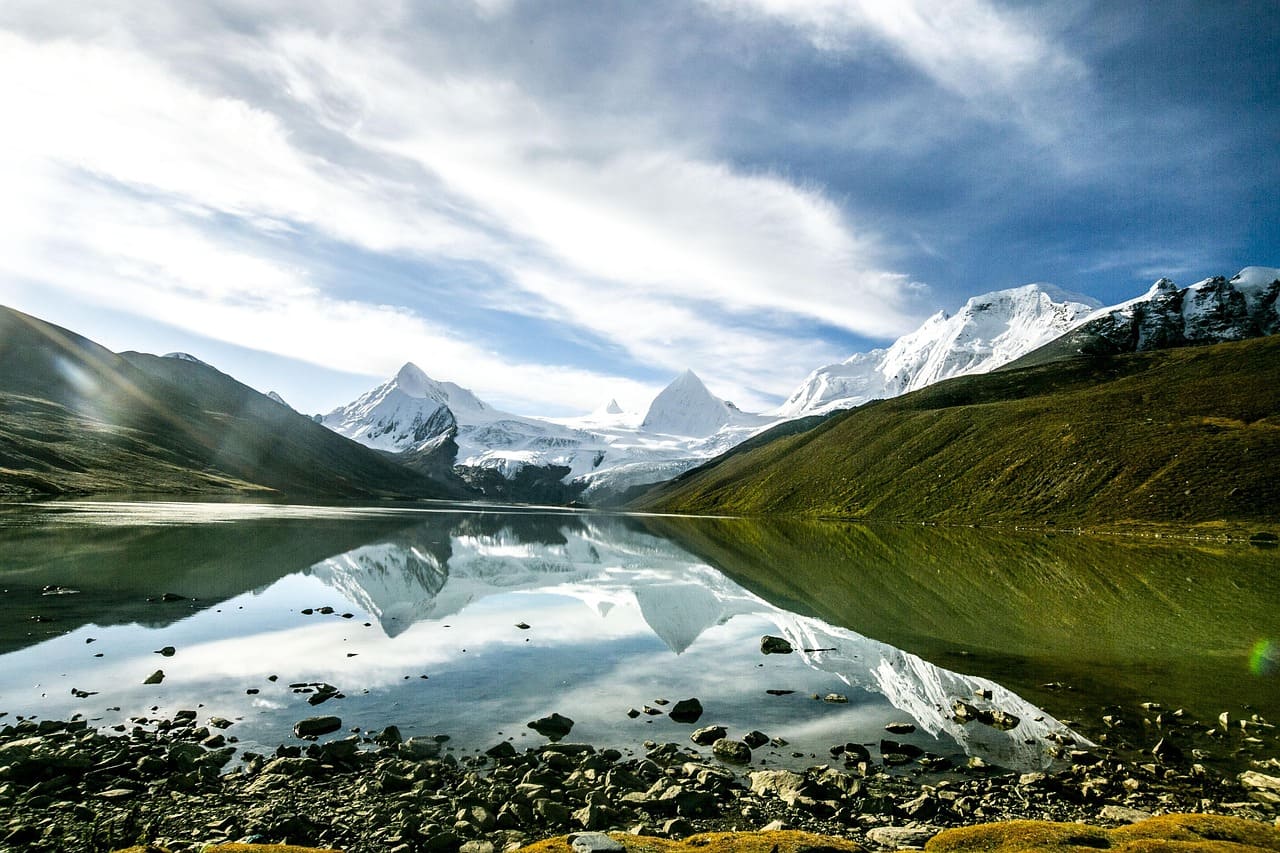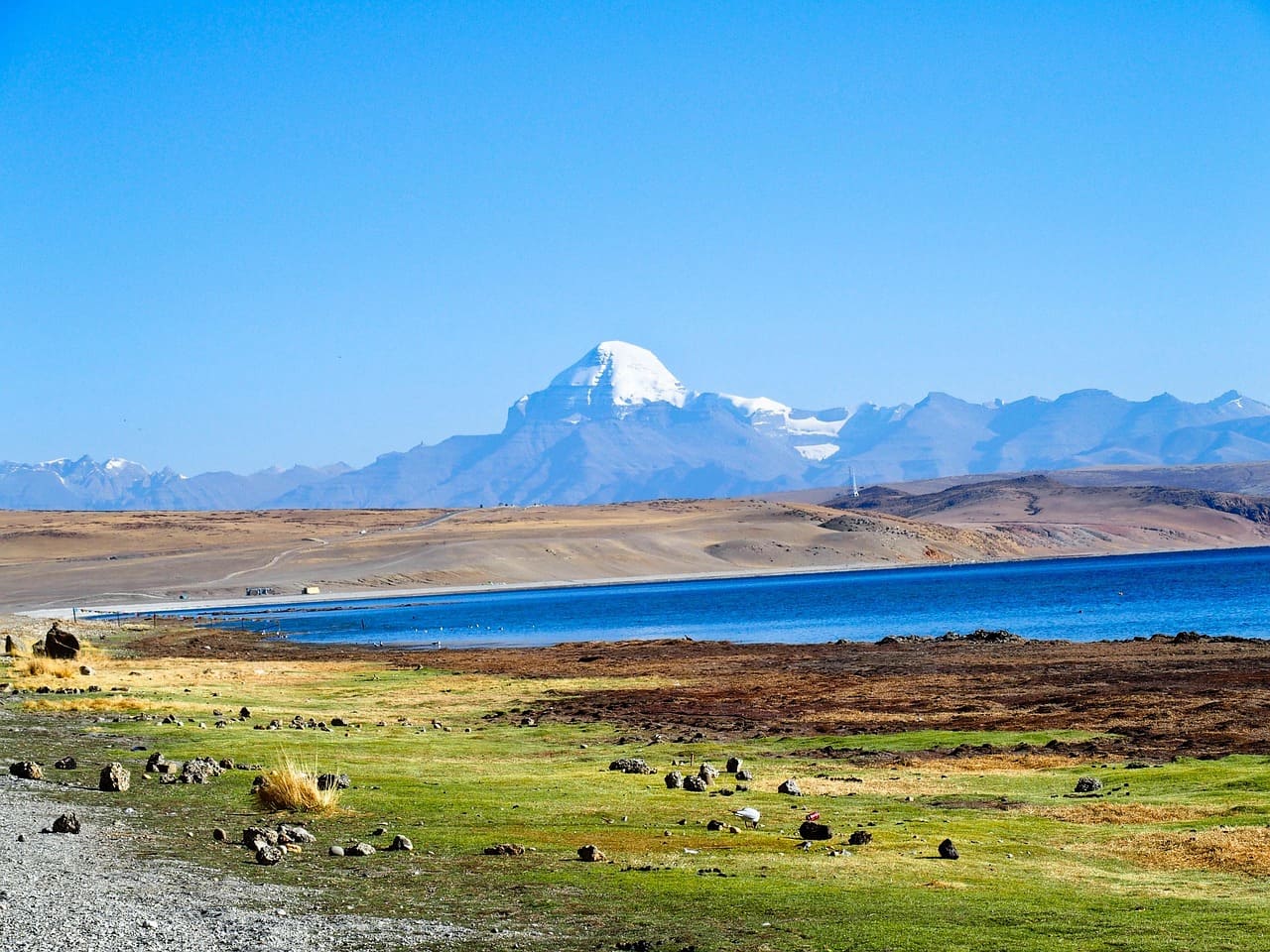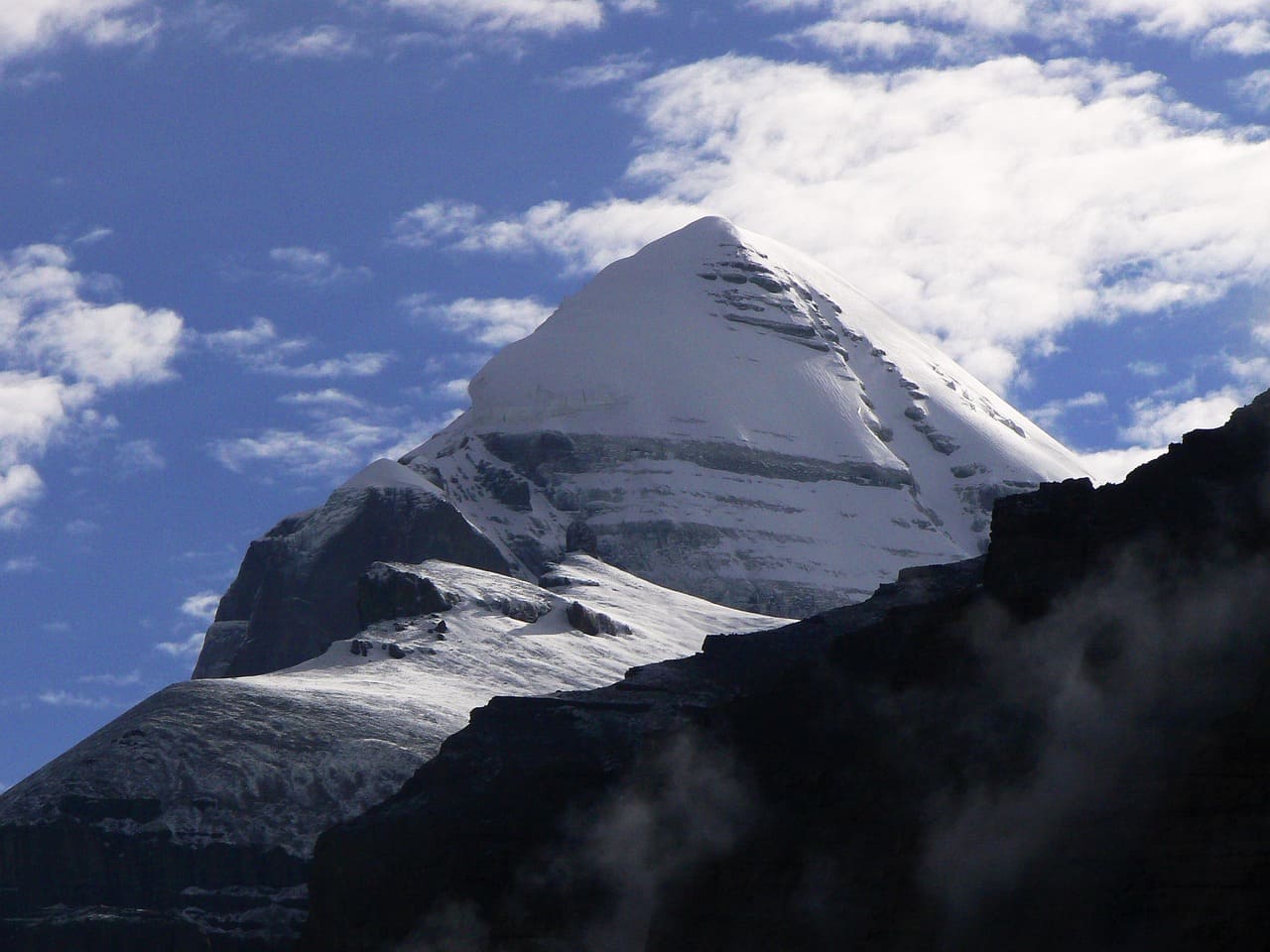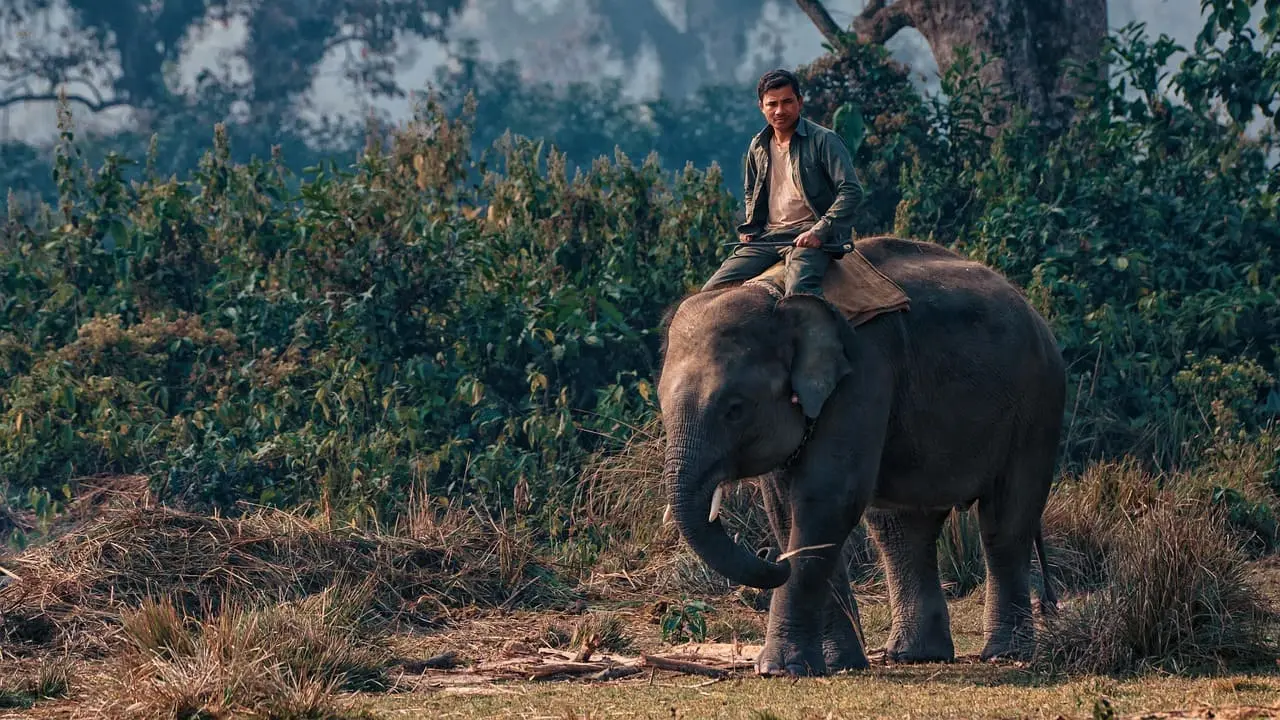The Kailash Mansarovar Yatra is famous among Indian and Nepalese Hindus for its breathtaking views of Mount Kailash and for taking a bath in the Mansarovar Lake.
The newly designed tour can be accessed via the Hilsa village, which is one of the villages located in the Humla district of Nepal and is the new gateway to the Kailash Mansarovar. The Kailash Yatra is considered one of the sacred pilgrimages for the Hindus, Buddhists, Jains, and the Bon religion. It is believed that if you do the circuit (Pari krama) of Mount Kailash, it helps you to get salvation and get rid of the death and birth cycle. You can take a holy dip in the Mansarovar Lake, which is believed to have been made by the Lord Brahma to worship Lord Shiva, and taking a bath in it is considered a sacred dip.
The Kailash Mansarovar yatra involves a strenuous trek known as the Kailash Parikrama (a 52 km circumambulation of Mount Kailash), crossing high-altitude passes like Dolma La (5,630 m), and visiting sacred sites like Yam Dwar, Dirapuk, and Zuthulphuk.
Why should you choose the Kailash Mansarovar via Hilsa?
Permits required for Kailash Mansarovar yatra via Hilsa
The permits required for the Mansarovar yatra via Hilsa are
Chinese Group Visa Tibet (for Entry in Tibet)
A Chinese group visa and A Tibet permit are required for you to enter the Tibet region of China. These permits can be obtained from the registered trekking agencies in Nepal or the Chinese embassies in Nepal. The cost for the permit is around 100 USD.
Tibet Travel Permit
The Tibet Travel Permit is another permit required to enter and trek to Kailash. The TTP permit can be obtained from the trekking agency or only from the Tourism Board office in Lhasa, but due to the Kerung flood, you will enter from the Hilsa, so you will need to get it from a registered trekking agency like us.
Alien’s Travel Permit (ATP)
The Aliens’ Travel Permit (ATP) is another permit required to enter Tibet. This visa is required for foreign travelers who are not from the Asia region. This permit needs to be obtained from the agencies only.
Military Permit
As the Kailash Mansarovar Yatra lies inside Tibet, which is a restricted area and under the control of the Chinese military, it's important to have a military permit as well. The permits can be obtained from the agencies themselves or the LHASA.
Restricted Area Permit (RAP)
A Restricted Area permit is another permit required to enter the Tibet region. As the permit is needed from the Nepal side only. The cost for the permit is around 100 USD for 1 week and 15 USD per day add-on during the peak seasons.
How to get the permits to enter the Tibet region?
All the required permits can be obtained from the registered trekking agencies in Nepal, like
Everest High Pass Adventures. The permit costs are included in the tour package, and it's convenient as well. If you take the permits manually, then it might take longer to get them.
Best time to do the Kailash Mansarovar Yatra Via Hilsa
The best time to do the Kailash Mansarovar Yatra is during the peak seasons, like spring and autumn, which are the same seasons for all the trekking destinations in Nepal and Tibet. During this month, the air is crisp and the landscape is fresh, making it perfect for the pilgrimage to visit Mount Kailash and do the Pari Krama. You can also do the trek in the winter and monsoon, but it is not suggested because during the winter the trail is covered with snow and is slippery and icy, making it difficult to walk, as the winter has cold air and everywhereis snow, which is not suitable for the human body, and during the monsoon the trail is slippery with mud, which can make it difficult to walk.
What are the special occasions at the Kailash Mansarovar Lake?
There are special occasions during the Kailash Mansarovar Yatra, like the Full Moon (Purnima) Parikrama, where many pilgrims prefer to do the trek during full moon nights, believing it amplifies the spiritual experience and blessings, and the Saga Dawa Festival (May/June), a major Tibetan Buddhist festival marking the birth, enlightenment, and death of Lord Buddha. A deeply spiritual time to visit Mount Kailash.
Frequently Asked Questions About Kailash Mansarovar Yatra Via Hilsa
How do we reach Kailash Mansarovar via Hilsa?
You’ll usually start from Kathmandu, fly or drive to Nepalgunj, then take a flight to Simikot. From there, it's a short helicopter ride to Hilsa, and then you cross the border into Tibet to continue the journey.
Is the Hilsa route to Kailash safe?
Yes, it’s considered safe for travelers. But since it involves high altitude, proper acclimatization and a reliable tour operator are key.
What’s the cost of Kailash Mansarovar Yatra via Hilsa?
The cost usually ranges from USD 2,500 to 3,500 depending on the services, accommodations, and mode of transport included.
How many days does the Kailash Yatra via Hilsa take?
Most itineraries are around 12 to 15 days from Kathmandu and back, including buffer days for flights and weather.
Can we take a helicopter from Simikot to Hilsa?
Yes, that’s actually the most common and scenic part. A short 20-minute helicopter ride takes you through beautiful mountain valleys.
What documents are required for this route?
You'll need a valid passport, Chinese group visa, Tibet travel permit, and Kailash travel permit usually arranged by your travel agency.
Do we need to be fit for this yatra?
A basic level of fitness helps. The altitude can be tough, especially during the Parikrama, so some physical preparation is definitely recommended.
When is the best time to go via Hilsa?
The best time is from May to September. June to August is popular, but check the weather as monsoon can affect flights in Nepal.
What’s special about the Hilsa route?
It's the shortest and most scenic route. Plus, it’s completely overland from the Nepal side until you enter Tibet.
How difficult is the Kailash Parikrama?
It's challenging due to high altitude, especially at the Dolma La Pass (5,630m). But with the right pace and support, most pilgrims complete it.
Do we need oxygen or special gear?
Not usually, but it’s good to carry altitude sickness meds and warm clothing. Some groups carry portable oxygen just in case.
What’s the distance from Hilsa to Kailash?
From Hilsa, you cross into Tibet, and then it’s around a 2–3 day drive to reach Darchen, the base of Mount Kailash.
Is there network or Wi-Fi during the trip?
The Network is limited. In Tibet, there may be Chinese SIMs, but in Hilsa and remote areas, you’ll mostly be disconnected.
Can we go individually or only in groups?
You need to be part of a group since Chinese authorities require group visas and permits for Kailash.
Do we need to carry food and water?
Most meals are included in packages, but it's smart to carry dry snacks, a reusable water bottle, and purification tablets.
What kind of accommodation is available?
In Nepal (Kathmandu, Nepalgunj), hotels are decent. In Tibet, it’s mostly guesthouses or dorm-style accommodation basic but manageable.
Is there a toilet facility along the route?
Toilets are basic, especially during the Parikrama. Be prepared for squatting toilets and limited access in remote areas.
Is this route suitable for older people?
Yes, many elderly pilgrims have done it, but they should consult a doctor first and maybe skip the Parikrama if health doesn’t permit.
Can we take a helicopter all the way to Kailash?
No, the helicopter only goes till Hilsa. After that, it’s overland travel by jeep or bus arranged by Tibetan authorities.
What’s the experience like with Everest High Pass Adventures?
People say they’re well organized and take care of permits, logistics, and guiding. Many travelers enjoy their attention to detail and support, especially during the high-altitude parts.





